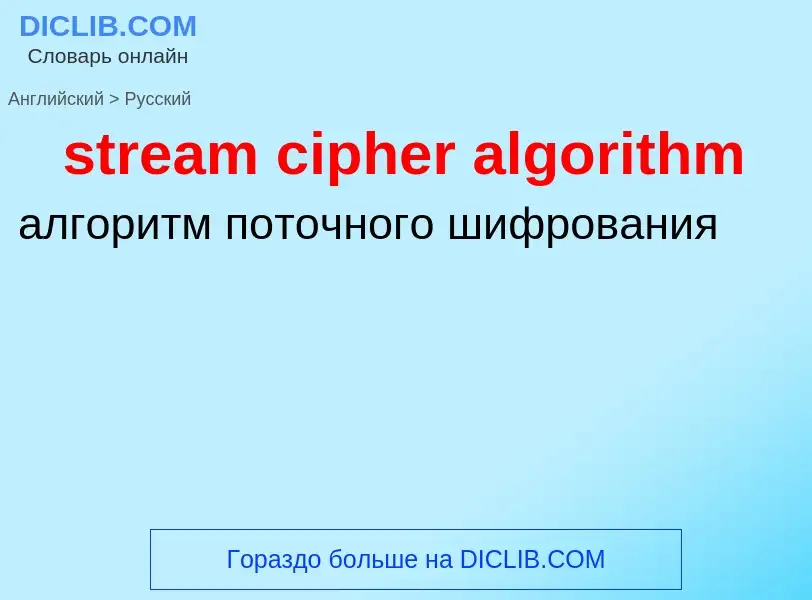Перевод и анализ слов искусственным интеллектом ChatGPT
На этой странице Вы можете получить подробный анализ слова или словосочетания, произведенный с помощью лучшей на сегодняшний день технологии искусственного интеллекта:
- как употребляется слово
- частота употребления
- используется оно чаще в устной или письменной речи
- варианты перевода слова
- примеры употребления (несколько фраз с переводом)
- этимология
stream cipher algorithm - перевод на русский
общая лексика
поточный шифр, потоковый шифр
шифр, в котором исходное сообщение преобразуется в шифротекст побитово. Исторически в отечественной криптографии принято использовать термин "поточный шифр", хотя термин "потоковый шифр" нам представляется более адекватным
антоним
['reilfens]
американизм
редкая изгородь из жердей
математика
алгоритмический метод
Определение
(неол. спец.).
Википедия
A stream cipher is a symmetric key cipher where plaintext digits are combined with a pseudorandom cipher digit stream (keystream). In a stream cipher, each plaintext digit is encrypted one at a time with the corresponding digit of the keystream, to give a digit of the ciphertext stream. Since encryption of each digit is dependent on the current state of the cipher, it is also known as state cipher. In practice, a digit is typically a bit and the combining operation is an exclusive-or (XOR).
The pseudorandom keystream is typically generated serially from a random seed value using digital shift registers. The seed value serves as the cryptographic key for decrypting the ciphertext stream. Stream ciphers represent a different approach to symmetric encryption from block ciphers. Block ciphers operate on large blocks of digits with a fixed, unvarying transformation. This distinction is not always clear-cut: in some modes of operation, a block cipher primitive is used in such a way that it acts effectively as a stream cipher. Stream ciphers typically execute at a higher speed than block ciphers and have lower hardware complexity. However, stream ciphers can be susceptible to security breaches (see stream cipher attacks); for example, when the same starting state (seed) is used twice.

![Lorenz SZ cipher]] machine as used by the German military during World War II Lorenz SZ cipher]] machine as used by the German military during World War II](https://commons.wikimedia.org/wiki/Special:FilePath/Lorenz Cipher Machine.jpg?width=200)

![Confederacy]]'s [[cipher disk]] used in the [[American Civil War]] on display in the [[National Cryptologic Museum]] Confederacy]]'s [[cipher disk]] used in the [[American Civil War]] on display in the [[National Cryptologic Museum]]](https://commons.wikimedia.org/wiki/Special:FilePath/Confederate cipher disk.png?width=200)

![The Caesar cipher is named for [[Julius Caesar]], who used an alphabet where decrypting would shift three letters to the left. The Caesar cipher is named for [[Julius Caesar]], who used an alphabet where decrypting would shift three letters to the left.](https://commons.wikimedia.org/wiki/Special:FilePath/Bust of Julius Caesar from History of the World (1902).png?width=200)



![Alan Turing's statue at [[Bletchley Park]] Alan Turing's statue at [[Bletchley Park]]](https://commons.wikimedia.org/wiki/Special:FilePath/Alan Turing.jpg?width=200)





